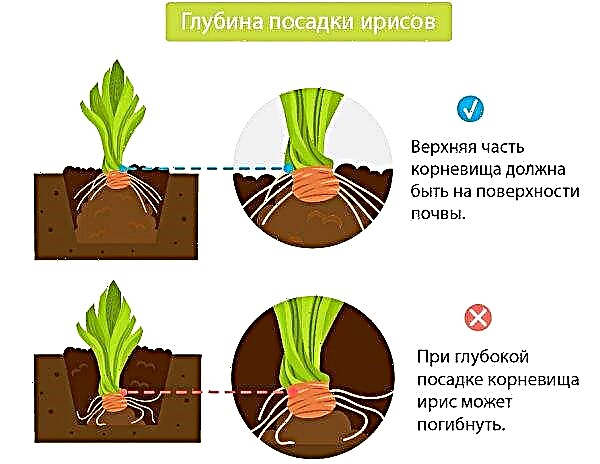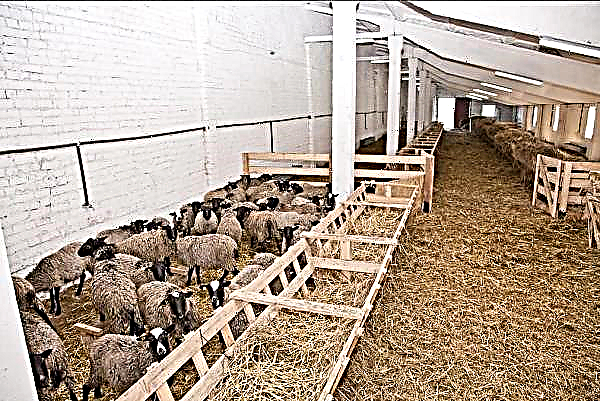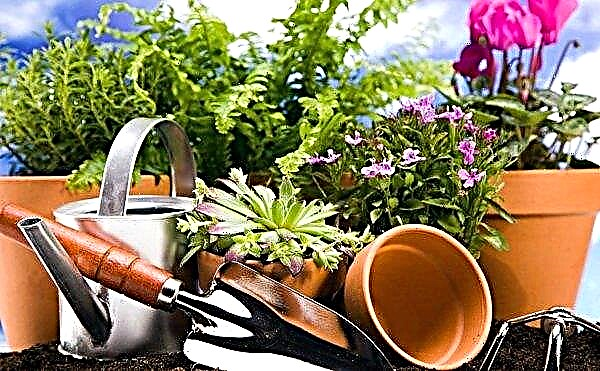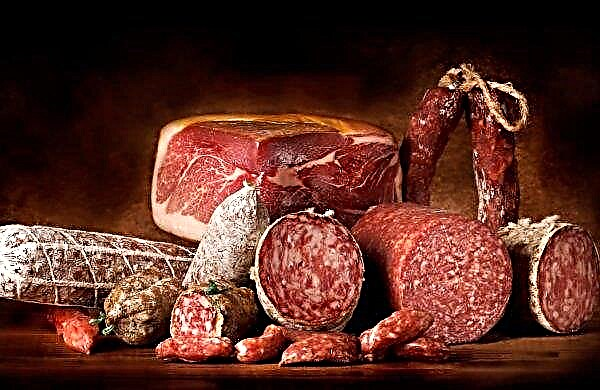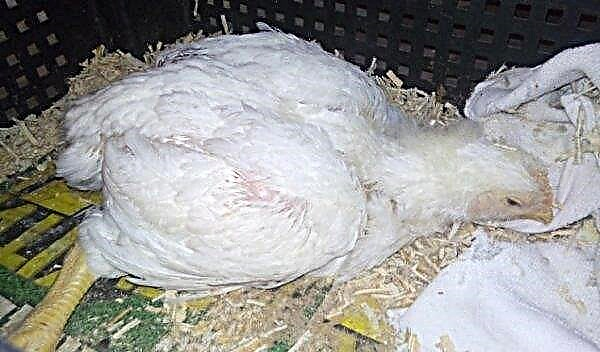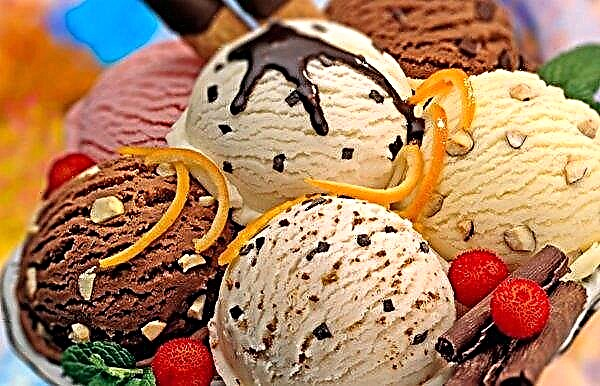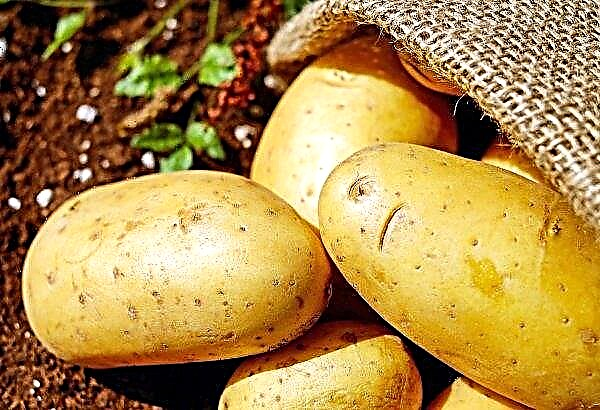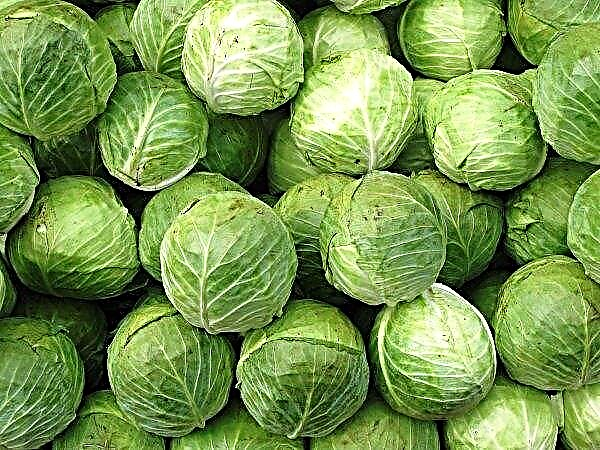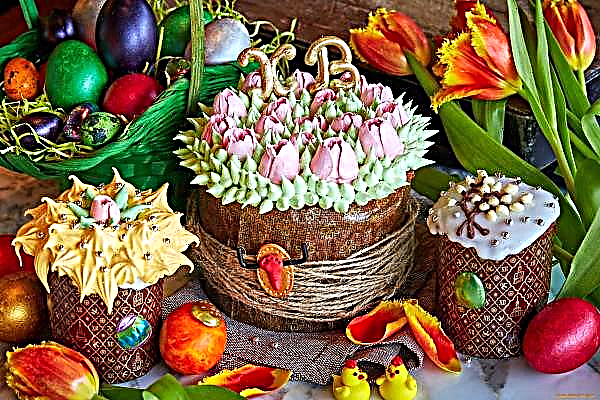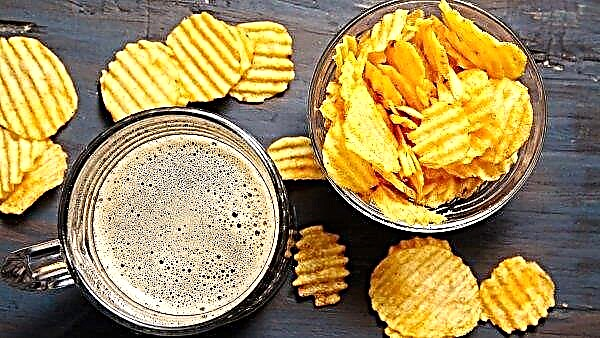Growing ducks is not an easy task, but it is the best option for beginner farmers. These birds are not too demanding on their diet, however, like all living things, they need a balanced diet for proper growth. We will tell in detail about how to feed ducklings in this article.
Types of feed for ducklings
Awareness of what ducklings eat will help poultry farmers provide their wards with a suitable diet. Here is a brief overview of the main types of food for chicks.
Cereal
Cereals are traditional sources of nutrition, accounting for up to 75–80% of the diet of poultry (regardless of the season). The valuable qualities of this raw material are due to its chemical composition (80% starch, 15% protein, 5% mineral components). This type of feed includes corn, wheat, oats, sorghum, barley, beer, rye, triticale, buckwheat, amaranth, brown rice, whole wheat bread and much more.
Grains are absorbed by the body of the duck by 80%, because it is a healthier choice than ready-made feed store. However, without additional components, cereals will not meet all the needs of a waterfowl. Protein will be especially lacking, because the diet of ducks requires at least 17% of this organic substance. In most grains, this percentage is much less. The only case when it is allowed to feed only cereals is the summer season, involving free-range poultry. Ducks gain weight very quickly, so you need to make sure that your pets are fed whole grains exclusively. Otherwise, the birds will gain too much weight.
The only case when it is allowed to feed only cereals is the summer season, involving free-range poultry. Ducks gain weight very quickly, so you need to make sure that your pets are fed whole grains exclusively. Otherwise, the birds will gain too much weight.
Succulent feed
Juicy food is the basis of young food in the summer. This group includes algae, terrestrial green plants, the green part of vegetables and root crops (boiled potatoes). To diversify the livestock menu, cereals can be used instead of potatoes, but they should not be more than a quarter of the usual portion. Since the summer, it is necessary to take care of the preparation of a combined silo.
Thus, the duckling will receive healthy grass all winter. The silo should stop emitting the smell of soaked apples. For this purpose, raw materials are allowed to mature at least 45-60 days. And to remove excess acid, 2 tbsp are added to each kilogram of silage. l ground chalk. Such a balanced food supplies young animals with the greatest amount of nutrients.
Animal products
Ducks are omnivorous; therefore, ingredients of animal origin must also be included in their diet. Often on free-range, they eat insects, slugs, worms, snails, small crustaceans, lizards and small frogs. Many farmers buy flour worms and periodically add them to their pets' feed. Other owners of domestic geese specifically grow earthworms in their own garden. The products of this group also include fishmeal, meat and bone meal, low-fat cottage cheese and thick fermented milk.
Other owners of domestic geese specifically grow earthworms in their own garden. The products of this group also include fishmeal, meat and bone meal, low-fat cottage cheese and thick fermented milk.
Mineral and Vitamin Supplements
The addition of mineral raw materials to a dry food or mash has two critical functions. Nutritional supplements contribute to better digestion and strengthen the immune system of birds. The following ingredients are used:
- finely ground shells, egg shells, crumbled chalk;
- fine gravel (or natural sand);
- bone flour;
- food salt;
- wood ash.
 Enrich your kids' menu with specialized organic additives, especially during the winter months. The organism needs ducklings in vitamins A and D.
Enrich your kids' menu with specialized organic additives, especially during the winter months. The organism needs ducklings in vitamins A and D.Feeding rules
Some breeds of ducks are specially designed for the production of eggs, others for the production of meat, and still others are completely decorative. Depending on who hatched the ducklings, they differ in size, body constitution and color. And even the color of the laid eggs is different for each breed. However, regardless of the breed of ducks that you own, their basic needs are the same: eating good quality, protecting against environmental threats (including predators) and ensuring proper living conditions.
Did you know? Duck quacking has no echo.
With feeding young animals you should not have any difficulties, as these are quite hardy and unpretentious birds. Consider the basic rules of feeding:
- It is possible to admit chicks to green food when the earth has already managed to warm up. The livestock is provided with the best care if it is systematically released into its natural environment. And in bad weather, chicks living in the barn should be treated with cut plants.
- Pets are also important to ensure constant access to clean fresh water. Its optimum temperature is +20 ° С (young animals cannot be fed with cold water).
- Food mixed in thick fermented milk should not be sticky. The viscous mixture sticks to the beak, causing discomfort.
- Wet food ducklings should eat at a time. Reuse of the hedgehog is unacceptable as it will stagnate and become unusable. With dry food, the opposite is true - feeders should be filled with granules around the clock.
- Food should be stored in a cool, dry place. Protect food from light and heat to prevent the rapid destruction of vitamins that are essential for the health of ducklings. Storage containers should be plastic, tightly closed. Try to avoid metal containers.
- Rats act as carriers of bacteria and infections in the house. Your task is to prevent contact of rodents with food of their pets. Always discard old, damp or moldy food. If there is any doubt about the freshness of the feed, dispose of such products without regret.
- Ducks should receive fresh, high-quality food daily. If you do not have a large herd, do not stock up with bulk bags of feed (vitamins in them are lost over time). Specialized feed is best bought in small quantities, but often.
- Pay attention to the expiration date of the purchased feed and never use an expired product. Be careful with unknown brands. To be sure of the quality of the feed, opt for reputable manufacturers.

How to make a diet for ducklings at home
Ducklings are big eaters; they eat a wide variety of foods. Consider the nuances of feeding young animals from the first day of life to two months of age.
Newborn
Only hatched chicks usually refuse food. But do not worry - being in the egg, the chickens are supplied with more nutrients than they need. Therefore, the first 24 hours, a feeling of hunger may not bother them. Watering the chicks is necessary from the first minutes of life, as newborns have a high risk of dehydration. To avoid this, ducklings are given water through a pipette. Initially, it is advisable for children to drink a weak solution of potassium permanganate.
Daily allowance
You can start feeding the day after the birth of the chicks. In the first few days it should be boiled eggs. Do not forget to pre-cool and grind the product. If the one-day-old ducklings do not want to eat from a bowl, sprinkle a little feed on the floor next to the feeder, which they will use later on. In addition, crushed eggs can be sprinkled on their backs. Since ducklings eat moving food in nature, they will instinctively begin to collect leftover food from the backs of relatives. Three-day-old pets can be fed with cottage cheese, however, choose a low-fat or fully fat-free product. As for how many times a day ducklings should be fed, the first seven days are fed every 2-3 hours (that is, chicks should eat at least 6 times a day). By the end of the first week, the diet is enriched with chopped nettles or any other grass (with the exception of poisonous plants and clover). You can cook mixtures of chopped herbs, eggs and cottage cheese.
Three-day-old pets can be fed with cottage cheese, however, choose a low-fat or fully fat-free product. As for how many times a day ducklings should be fed, the first seven days are fed every 2-3 hours (that is, chicks should eat at least 6 times a day). By the end of the first week, the diet is enriched with chopped nettles or any other grass (with the exception of poisonous plants and clover). You can cook mixtures of chopped herbs, eggs and cottage cheese.
Important! Feeding chicks to raw nettles is unacceptable. The glandular hairs of this herb will burn the walls of the stomach and cause irritation. Pour boiling water over the plant. And it is desirable that it be a young grass.
Use also ordinary yogurt, it will help to increase the defenses of the young body and will prevent the main ailments. From the moment the ducklings learn to drink from the drinker, the water needs to be replaced daily.
Weekly
Specialized starter feeds have been developed for ducklings a week old and older. Ducklings are allowed to eat as much as they wish. Therefore, you should regularly add fresh food to the feeder, as well as guarantee birds free access to food. With the beginning of the second week, the kids willingly eat grains that are previously ground into flour. Crushed corn, wheat, barley, oats, millet and sorghum are added to the diet. In the period under review, boiled buckwheat is very useful. The daily rate of grain per individual is 20 g.
With the beginning of the second week, the kids willingly eat grains that are previously ground into flour. Crushed corn, wheat, barley, oats, millet and sorghum are added to the diet. In the period under review, boiled buckwheat is very useful. The daily rate of grain per individual is 20 g.
Important! Milling cereals simply is not enough. To remove the outer shell of the grains, the resulting flour must be sieved. Bran is a threat to the health of young animals - they are not absorbed by the immature organism and can even cause the death of ducklings.
With the onset of the 12th day, eggs should be excluded from the menu. And the amount of greens, by contrast, should be increased. The daily norm of green forage per head is 30 g. In the summer of weekly pets it is already possible to let them walk on open water bodies (rivers, ponds, lakes and meadows), but under close supervision, even if they walk with a goose.
Two weeks
Ducklings, whose age exceeds 2 weeks, you can continue to feed the finished dry mixes. From 15 days, feed your pets no more than 3-5 times a day. Give preference to wet mixers - they are more friable and do not stick together. They should include crushed wheat, barley, bran, fish or meat and bone meal. Cottage cheese and eggs are removed from the diet, replacing them with root crops. Be sure to include boiled potatoes, carrots, pumpkin, zucchini, cabbage, fresh cucumbers in the menu. You can prepare a mixture based on fermented milk products (whey or thick fermented milk). Let's give it in the afternoon, and sprinkle compound feed at night. For dinner, it is advisable to feed the bird with sprouted grain. This is a favorite dish of ducks.
Be sure to include boiled potatoes, carrots, pumpkin, zucchini, cabbage, fresh cucumbers in the menu. You can prepare a mixture based on fermented milk products (whey or thick fermented milk). Let's give it in the afternoon, and sprinkle compound feed at night. For dinner, it is advisable to feed the bird with sprouted grain. This is a favorite dish of ducks.
Between feeds, provide your pets the opportunity to enjoy fresh grass and chopped fruit. Also, chicks can peck weed grass from the garden. And to maintain health treat young animals with mineral raw materials.
Three weeks
Ducklings should not be kept in the starting feed for too long, as such food is oversaturated with proteins. Starting from the 3rd week, ducklings should be fed with mixtures including corn and wheat flour, sunflower meal, fodder yeast and fish flour. For three-week-old babies, walks should become regular. Throughout the summer period, you can practice keeping on a walk near the house. Poultry will be able to take care of themselves - to obtain the grass they love, to receive the necessary amount of sunlight. If the ducklings are hot, then they spend most of their time in bodies of water, eating duckweed. In addition, this method of maintenance is economically advantageous. However, the kids should spend the night in the houses. From the age of three weeks, the number of meals with free keeping is reduced to 2 times.
Poultry will be able to take care of themselves - to obtain the grass they love, to receive the necessary amount of sunlight. If the ducklings are hot, then they spend most of their time in bodies of water, eating duckweed. In addition, this method of maintenance is economically advantageous. However, the kids should spend the night in the houses. From the age of three weeks, the number of meals with free keeping is reduced to 2 times.
Monthly
At the age of one month, the chicks continue to be fed with mixtures, including boiled root vegetables, vegetables, grains, ground peas, fish and meat and bone meal, fodder yeast. The menu also adds cleanings, food leftovers, raw meat (worms, snails, insects), dry bread soaked in water in advance. Moldy bread should not be given to chicks, as it leads to aspergillosis.
Important! It is not recommended to add finely ground flour to feed mixtures - it becomes prel and sticks together. This threatens to block the nasal cavity and cause problems with the respiratory system.
However, young animals, reaching 1 month old, receive the bulk of organic and mineral substances in the form of green feed.
After a month
In a month and a half, ducklings reach a weight of 2 kg, and their meat is already characterized by high nutritional properties, as well as juiciness and softness. If we talk about two-month-old chicks, then 300 g of fodder mixture should be allocated for one individual per day. The list of products recommended for this period includes wheat, corn, millet, fodder yeast, meat and bone meal, fish meal, various mineral additives. The daily rate directly depends on the breed of bird and the purpose of breeding. If your goal is to get a large number of eggs, feed the birds in moderation. Thus, you will not allow excess weight in the hens, which will contribute to their better egg production.
The daily rate directly depends on the breed of bird and the purpose of breeding. If your goal is to get a large number of eggs, feed the birds in moderation. Thus, you will not allow excess weight in the hens, which will contribute to their better egg production.
Did you know? Ducklings take for their mother the first creature that they see when hatched from an egg.
Features of feeding meat breeds
In the matter of turning little chicks into well-fed ducks, the organization of proper feeding plays a crucial role. Babies begin to feed intensively from the first days of life. Over 3 months, individuals must accumulate enough muscle mass to be ready for slaughter. A duckling that has not been supplied with all the required nutrients will not grow at the proper pace. In the first 10 days, the chicks are fed in small portions, but often. Young ducks need food with a high concentration of protein and calories. During the first 3 weeks of life, supply young animals with starter feed for meat breeds, where the percentage of protein is 18–20. This allows you to accelerate the mass growth. Make sure the pellets are small enough for ducklings. Or you may prefer a dry mix. From week 4, switch the bred birds to a maintenance diet with 14% protein. If you do not want to use store-bought foods, then give the newborn boiled eggs and low-fat cottage cheese. In the future, introduce succulent feed: nettle (in summer) and carrot or bean silo (in the winter months).
During the first 3 weeks of life, supply young animals with starter feed for meat breeds, where the percentage of protein is 18–20. This allows you to accelerate the mass growth. Make sure the pellets are small enough for ducklings. Or you may prefer a dry mix. From week 4, switch the bred birds to a maintenance diet with 14% protein. If you do not want to use store-bought foods, then give the newborn boiled eggs and low-fat cottage cheese. In the future, introduce succulent feed: nettle (in summer) and carrot or bean silo (in the winter months).
Did you know? Only female ducks can quack. Drakes cannot quack.
Pea-oatmeal mixture, chopped fodder cabbage and bread soaked in water also contribute to the acceleration of growth. Equally important is the organization of proper drinking, as discussed above. Otherwise, the birds will lose interest in food and reduce in mass. It is better to refuse to use medications for weight gain so as not to poison ducklings with chemistry. In addition, the illiterate use of a particular additive can harm even representatives of the most persistent breeds.
What can not feed ducklings
When fattening young animals should be careful with certain products. Do not feed ducklings with such products:
- citrus (they block the ability of ducks to absorb calcium);
- spinach (similarly to citrus spinach interferes with the absorption of calcium);
- iceberg lettuce (give this food with caution - in small quantities, salad will not harm young animals, however uncontrolled feeding will lead to diarrhea);
- green tomatoes, eggplant, raw white potatoes (all these plants belong to the solanaceous family and, unfortunately, their stems, leaves and fruits are extremely toxic to ducklings);
- raw dried beans (raw beans are toxic);
- clover and maple foliage (young food massively dies from such food);
- poisonous herbs (fruit cock, tsikuta, black hen, celandine and others);
- fresh milk and milk porridge (such food spoils quickly, which causes digestive upset, chicks can vilify).
 Thus, feeding ducklings allows us to solve several problems at the same time: to guarantee high immunity in young animals, prevent various ailments and get the maximum number of eggs and meat. If you follow all the rules of feeding your business will certainly succeed.
Thus, feeding ducklings allows us to solve several problems at the same time: to guarantee high immunity in young animals, prevent various ailments and get the maximum number of eggs and meat. If you follow all the rules of feeding your business will certainly succeed.
